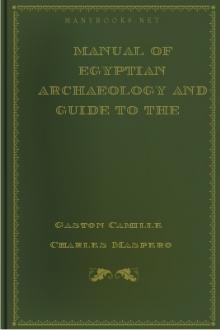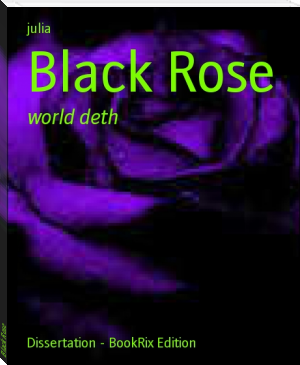Ancient America, in Notes on American Archaeology by John D. Baldwin (best thriller books to read .TXT) 📕

"It is in the form of a serpent, upward of 1000 feet in length, extended i
Read free book «Ancient America, in Notes on American Archaeology by John D. Baldwin (best thriller books to read .TXT) 📕» - read online or download for free at americanlibrarybooks.com
- Author: John D. Baldwin
- Performer: -
Read book online «Ancient America, in Notes on American Archaeology by John D. Baldwin (best thriller books to read .TXT) 📕». Author - John D. Baldwin
This, however, does not require us to assert positively that the Central American “Colhuas” and the legendary Atlantes could not possibly have been the same people, or people of the same race. Room may be left for any amount of conjecture not inconsistent with known facts, without making it necessary to accept a theory of the origin of the old Mexican race which at present can neither be proved nor disproved.
IT WAS AN ORIGINAL CIVILIZATION.It has been said, very justly, by one explorer of the Mexican and Central American ruins, that “the American monuments are different from those of any other known people, of a new order, and entirely and absolutely anomalous; they stand alone.” The more we study them, the more we find it necessary to believe that the civilization they represent was originated in America, and probably in the region where they are found. It did not come from the Old World; it was the work of some remarkably gifted branch of the race found on the southern part of this continent when it was discovered in 1492. Undoubtedly it was very old. Its original beginning may have been as old as Egypt, or even farther back in the past than the ages to which Atlantis must be referred; and it may have been later than the beginning of Egypt. Who can certainly tell its age? Whether earlier or later, it was original.
Its constructions seem to have been a refined and artistic development of a style of building different from that of any other people, which began with ruder forms, but in all the periods of its history preserved the same general conception. They show us the idea of the Mound-Builders wrought out in stone and embellished by art. The decorations, and the writing also, are wholly original. There is no imitation of the work of any people ever known in Asia, Africa, or Europe. It appears evident that the method of building seen in the great ruins began with the ruder forms of mound-work, and became what we find it by gradual development, as the advancing civilization supplied new ideas and gave higher skill. But the culture and the work were wholly original, wholly American.
The civilized life of the ancient Mexicans and Central Americans may have had its original beginning somewhere in South America, for they seem more closely related to the ancient South Americans than to the wild Indians north of the Mexican border; but the peculiar development of it represented by the ruins must have begun in the region where they are found. I find myself more and more inclined to the opinion that the aboriginal South Americans are the oldest people on this continent; that they are distinct in race; and that the wild Indians of the North came originally from Asia, where the race to which they belong seems still represented by the Koraks and Chookchees found in that part of Asia which extends to Behring’s Strait.
If, as there is reason to believe, the countries on the Mediterranean had communication with America in very ancient times, they found here a civilization already developed, and contributed nothing to change its style of building and decorating cities. They may have influenced it in other respects; for, if such communication was opened across the Atlantic, it was probably continued for a long time, and its interruption may or may not be due, as Brasseur de Bourbourg supposes, to the cataclysm which ingulfed Atlantis. Religious symbols are found in the American ruins which remind us of those of the Phœnicians, such as figures of the serpent, which appear constantly, and the cross, supposed by some to represent the mounting of the magnetic needle, which was among the emblems peculiar to the goddess Astarte. A figure appears occasionally in the sculptures, in which some have sought to recognize Astarte, one at Palenque being described as follows: “It is a female figure moulded in stucco, holding a child on her left arm and hand, just as Astarte appears on the Sidonian medals.” I find it impossible to see that this figure has any resemblance whatever to the Phœnician goddess. They are not alike either in dress, posture, or expression. Dupaix describes it correctly in saying it represents a person apparently “absorbed in devotion”—a worshiper, and not a goddess. Moreover, Astarte usually appears on the medals standing on the forward deck of a vessel, holding a cross with one hand, and pointing forward with the other. And, finally, this figure seems to represent, not a woman, but a priest. There was sun-worship in America, and the phallic ceremonies existed in some places in the time of Cortez. In Asia these ceremonies and figures of the serpent were usually associated with sun-worship. Humboldt was sure that these symbols came to America from the Old World. A more careful study of the subject might have led him to modify this belief. But, whether we adopt his explanation or some other, the traditions on both sides of the Atlantic are without meaning unless it be admitted that there was communication between the two continents in times of which we have no history.
170-* See Appendix C.
VIII.AMERICAN ANCIENT HISTORY.
If a consecutive history of the ancient people of Central America and Mexico were ever written, it has been lost. Probably nothing of the kind ever was written in the manner which we call history, although there must have been regular annals of some kind. The ruins show that they had the art of writing, and that, at the south, this art was more developed, more like a phonetic system of writing than that found in use among the Aztecs. The inscriptions of Palenque, and the characters used in some of the manuscript books that have been preserved, are not the same as the “Mexican Picture Writing.” It is known that books or manuscript writings were abundant among them in the ages previous to the Aztec period. They had an accurate measure of the solar year and a system of chronology, and many of their writings were historical. Among the Mayas, and in other communities of the same family, writing was largely used in the time of the Spaniards. It was common also among the Aztecs, but they used “picture writing.” Las Casas wrote on this point as follows:
“It should be known that in all the commonwealths of these countries, in the kingdoms of New Spain and elsewhere, among other professions duly filled by suitable persons was that of chronicler and historian. These chroniclers had knowledge of the origin of the kingdoms, and of whatever related to religion and the gods, as well as to the founders of towns and cities. They recorded the history of kings, and of the modes of their election and succession; of their labors, actions, wars, and memorable deeds, good and bad; of the virtuous men or heroes of former days, their great deeds, the wars they had waged, and how they had distinguished themselves; who had been the earliest settlers, what had been their ancient customs, their triumphs, and defeats. They knew, in fact, whatever pertained to history, and were able to give an account of all past events. * * * These chroniclers had likewise to calculate the days, months, and years; and though they had no writing like ours, they had their symbols and characters through which they understood every thing; and they had great books, which were composed with such ingenuity and art that our characters were really of no great assistance to them. Our priests have seen those books, and I myself have seen them likewise, though many were burned at the instigation of the monks, who were afraid they might impede the work of conversion.”
Books such as those here described by Las Casas must have contained important historical information. The older books, belonging to the ages of Copan and Palenque, went to decay doubtless long previous to his time, in the wars and revolutions of the Toltec period, or by the wear of time. The later books, not otherwise lost, were destroyed by Aztec and Spanish vandalism. According to tradition, and the testimony of writings still in existence when the Spaniards went there, the Aztec or Mexican sovereign Ytzcoatl destroyed many of the old Toltec books. His aim was probably to exterminate among the people all memory of the previous times. Such things have been done with similar motives, as we know, in other countries, by successful usurpers and conquerors. We learn from Spanish writers that a still greater destruction of the old books was effected by the more ignorant and fanatical of the Spanish priests who were established in the country as missionaries after the Conquest. This is stated by Las Casas, himself one of the missionaries. Besides the many smaller bonfires of this fanaticism, there is record of a great conflagration, under the auspices of Bishop Zumarraga, in which a vast collection of these old writings was consumed. As the writing was all on paper (which had long been used in the country), the burning was easily accomplished.
THE OLD BOOKS NOT ALL LOST.The Franciscan and Dominican fanatics, whose learning and religion consisted of ignorance and bigotry, hoped to exterminate among the people all recollection of their former history, ideas, and religious customs. A few of the books, however, escaped; none, indeed, that were very old, for it does not appear that any of the manuscripts rescued from destruction were written or copied earlier than the age which closed the Aztec domination. None of the great books of annals described by Las Casas are among them, but they relate to the ancient times, and most of them are copies or reproductions of much older books.
Among these destroying Spanish ecclesiastics, there was here and there one who quietly secured some of the manuscripts, or copies of them. These were kept from the flames. Others were secreted by the people; and subsequently, in years after the conquest was completed, some of the more intelligent churchmen wrote histories of the country, or portions of it, which were preserved in manuscript. Sahagun wrote such a history, which shows that he had studied the traditions and some of the old books; this work is printed in the great collection of Lord Kingsborough. Diego de Landa, first bishop of Yucatan, wrote a history of the Mayas and their country, which was preserved in manuscript at Madrid





Comments (0)